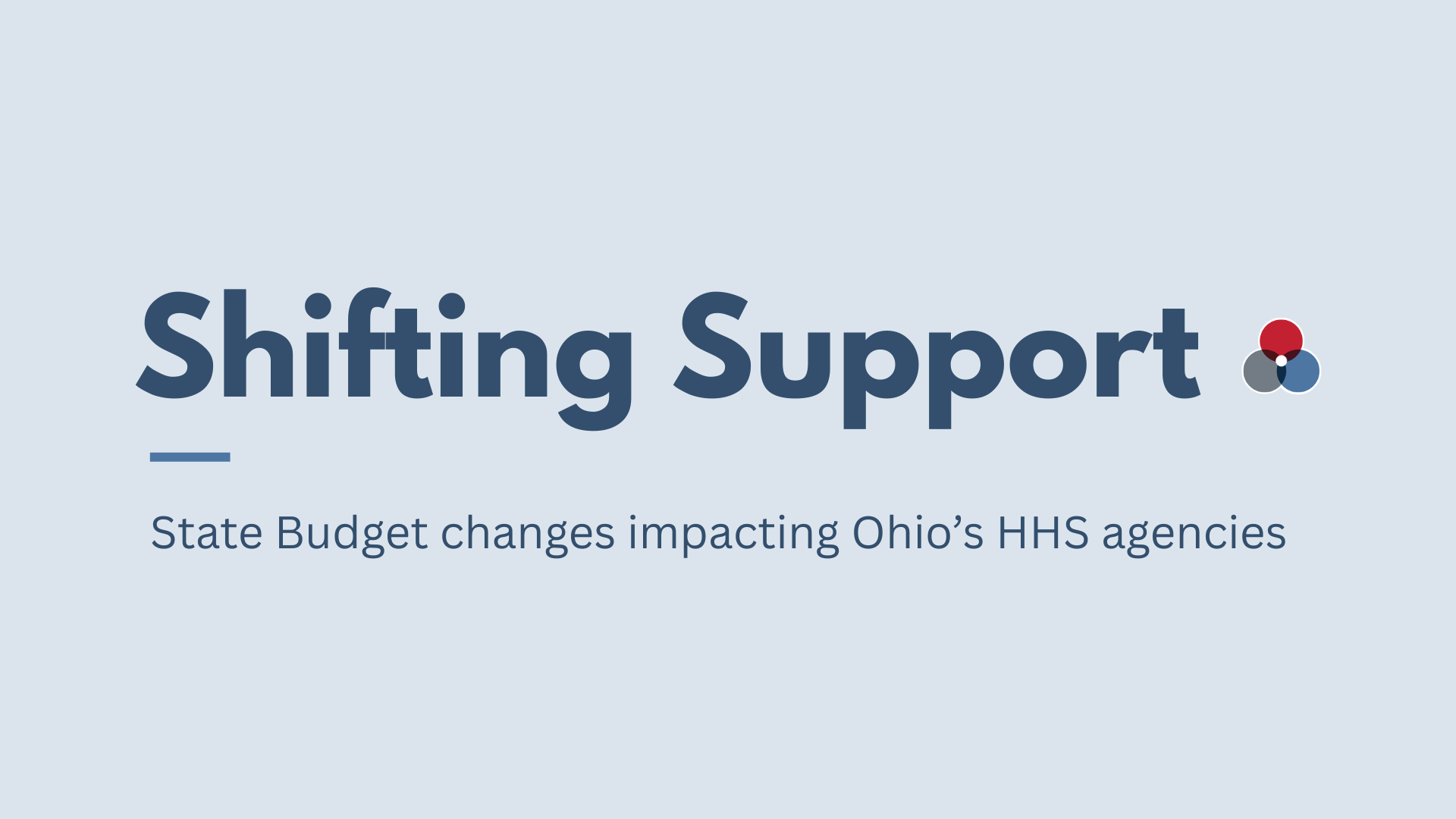The ongoing impact of COVID-19 on individuals with developmental disabilities, their families, and providers
Introduction
As we pass the three-year mark since the start of the COVID-19 pandemic, it is essential to consider the impact on people with developmental disabilities, and how this will continue to reverberate. Within the system designed to support individuals with disabilities, COVID-19 amplified existing concerns and created new ones. The following will describe several important factors that have had lingering impacts.
Multiple studies demonstrated that people with intellectual disabilities were disproportionately impacted by the pandemic, with an increased risk for death.
Disparities in Health Impact
Multiple studies demonstrated that people with intellectual disabilities were disproportionately impacted by the pandemic, with an increased risk for death.[1] Researchers have attributed this to multiple factors, including a greater likelihood of group living, a higher inability to socially distance, and higher rates of pre-existing comorbidities. One large-scale study concluded, “…. having an intellectual disability was the strongest independent risk factor for presenting with a Covid-19 diagnosis and the strongest independent risk factor other than age for Covid-19 mortality.”Other research has pointed to the heightened negative mental health impact of the pandemic specifically for this population. [2] People with disabilities suffered the impact of social isolation, a lack of ability to participate in work and social activities and decreased access to key therapies and other supports. While in some cases virtual alternatives were available, these were not viable options for everyone. People with disabilities are less likely to use the internet and own a computer.[3] This was likely heightened in rural Ohio, where a lack of access to reliable broadband internet has been well documented.
Children with Disabilities
The long-term impact of decreased access to services on children with disabilities may be particularly pronounced. As schools shut down in the spring of 2020, many children with disabilities lost access to therapies, specialized services, and critical social interaction typically provided in a school-based environment. In some cases, these lost gains will be difficult to recover, especially for young children. According to a report conducted by the Easter Seals, “The first five years of a child’s life are the most critical time in their development; these crucial years set the trajectory of their entire lives. For a child with a developmental delay or disability, early diagnosis and early intervention are key.... Missed milestones and any trauma faced at this developmental stage may have long-term consequences across their lifespan.” One study of parents of children with disabilities demonstrated that 40 percent attributed declines in their child’s skills to changes in access or delivery mode of therapy.[4]According to Dr. Richard Grossberg, a pediatric neurodevelopmental disabilities specialist at University Hospitals and board member with Achievement Centers for Children, children with disabilities and their families likely experienced the COVID years differently, depending on their specific circumstances and the condition of the child. Some services, such as early intervention for young children, are likely better delivered in-person than virtually, according to Grossberg, and children who were highly dependent on structured routines may have struggled to adapt to abrupt changes in their daily lives. However, “some kids thrived in an online environment,” were able to establish good routines at home, and may have benefited from additional time spent with their families.
Some kids thrived in an online environment,” were able to establish good routines at home, and may have benefited from additional time spent with their families.
Insufficient in-home one of the greatest impacts for children with disabilities
In Grossberg’s observations, one of the greatest challenges posed by the pandemic for children with disabilities and their families has been a decreased ability to access sufficient in-home care. Children with complex medical needs who require nursing support have been particularly impacted by the current workforce shortage, an issue of concern to Grossberg. A lack of access to care can cause great stress for families and put children at risk for medical complications.Grossberg emphasized that while some children may experience long-term setbacks due to pandemic-era changes, most will ultimately rebound, especially through the help of supportive parents and providers. Additionally, the expansion of access to telehealth and other virtual services has, in some cases, dramatically improved access to some services, which has been an unexpected upshot for many families, and reduced the burden and costs of excessive travel to and from appointments. He urges parents whose children may have struggled to adapt over the past few years to “not lose hope,” and that “children’s brains are capable of overcoming a lot of stress.”
Family and Caregiver stress
Caregivers also suffered the impacts of the pandemic, with some reporting higher rates of loneliness and feelings of stress/burden, and caregivers of children reporting increased worry, anxiety, depression, and stress, and less ability to self-care. [5] [6]According to Dr. Eileen Costello, an expert cited in the New York Times,
“Parents are utterly burned out,” Dr. Costello said. “The toll this is taking on both kids and parents cannot be underestimated.” Sleep-wake cycles are off, she said, programs and camps are canceled — including the camps that are designed to help keep kids with special needs from losing the progress they’ve made over the course of the summer.”[7]
One Cuyahoga county-based provider, The Achievement Centers for Children, has been providing summer camp to children with developmental disabilities for decades, and has witnessed firsthand how valuable these services are to families. When the camp was forced to shift to a virtual format in the summer of 2020, families were left without needed respite and children struggled to adapt. In some cases, families experienced added financial stress, as some parents had to leave work to take on enhanced caregiving roles. One study of over 1,500 family members of individuals with developmental disabilities found that over 15 percent reported becoming unemployed during the pandemic, and 36 percent reported having to reduce work hours to care for their family member. Over half reported having spent more money to care for their family member over the course of the pandemic. [8]
A workforce crisis made worse
The toll of COVID-19 on the Direct Support Professional (DSP) workforce has been stark, as existing labor force dynamics were exacerbated. DSPs provide critical support and care to people with disabilities, allowing them to live independently and participate in their communities. As most DSPs were considered essential, many worked extra hours or took on additional responsibilities when the pandemic hit, compounding stress and rates of burnout.Simultaneously, many in the profession left their jobs due to fear of infection, childcare issues, needs to quarantine, or other reasons. [9] As a result, the workforce shortage that existed prior to COVID became vast. Providers began to report turning clients away or reducing services due to a lack of staff.
COVID’s impact on the Adult Day Array
Since the start of the pandemic, there has been a decline in overall participation in facility-based work and nonwork activities among people with disabilities. While inconsistencies in reporting on day/employment activities across the state make it difficult to measure the exact decrease, the data suggests that participation has not fully rebounded.According to the most recent publicly available outcome data tracked through the Employment First initiative, in 2019, for non-work activities (both community and facility-based), over 24,000 participants were reported statewide. In 2021, this number had dropped to approximately 16,000.[10] For facility-based work, between 2019 and 2021, there was a decline in participation of about 3,500 people.
Day services/group employment down 20% since the start of the pandemic
To present a local picture, according to data provided by the Cuyahoga County Board of Developmental Disabilities, there were over 3,100 individuals engaged in day services/group employment in March of 2020. By May 2021, this dropped to less than 1,400, but has since rebounded, as of March 2023, to approximately 2,500 individuals. Overall, this represents a decrease since the start of the pandemic of nearly 20 percent.While some of these individuals may have shifted to community-based paid employment, it’s likely that others have simply not returned to services. As comorbidities are common among people with developmental disabilities, participation in group activities posed a high risk during the height of the pandemic.While facilities were forced to shut down for a period of time early in the pandemic, the state allowed providers to reopen in May of 2020, with many restrictions designed to reduce COVID transmission. Due to minimum square footage requirements, designated bathrooms, and other factors these restrictions initially limited availability for individuals to return to onsite services.
Disengagement and disconnection impact access to services
This decline in participation is concerning as it may indicate people have disengaged altogether from services, lack the support needed to participate, or that provider workforce shortages may have impeded service availability. Furthermore, national data suggests that some HCBS providers, particularly in adult day and group home programs, closed permanently in recent years. According to a survey of states conducted by KFF, “As the pandemic persisted, HCBS workforce shortages contributed to provider closures: 44 states reported a permanent closure of at least one Medicaid HCBS provider during the pandemic. States reported more closures in 2022 than the year prior (30), suggesting that even as the broader economy returns to normal, HCBS providers continue to struggle. Although states did not provide explanations for why so many HCBS providers closed in 2022, it could be attributed to ongoing workforce shortages potentially coupled with provider financial difficulties stemming from pandemic-related service disruptions. “[11]This data should continue to be monitored as more recent data is reported. Additional efforts may be needed to reengage individuals and ensure the availability of the required support for people to pursue the activities they choose.
The end of the PHE and associated temporary benefit changes will likely negatively impact many individuals served within the developmental disabilities system and their caregivers.
The end of the PHE and associated benefit cuts
In 2020, the government declared a federal Public Health Emergency (PHE) in response to the urgent crisis facing the nation. Subsequently, many of the enhancements made to public benefits (designed to lessen the financial impact of COVID) were tied to the PHE. In response to advances in treatment and declining infection, in February 2023, the Biden administration gave notice that the federal PHE would end in May.The end of the PHE and associated temporary benefit changes will likely negatively impact many individuals served within the developmental disabilities system and their caregivers. This includes the end of the emergency Supplemental Nutrition Assistance Program (SNAP) allotments; this increase in SNAP benefits associated with the pandemic came to an end after three years in March 2023. For households receiving SNAP, this resulted in an average decrease of $172 per month in benefits.SNAP is a critical resource for people with disabilities and can play a key role in allowing people to live independently and stay out of institutions. This loss of benefits is likely to have a severe impact on many across the state.Many DSPs also rely on benefits, including SNAP and Medicaid, to meet their basic needs, given their low wages. Therefore, a decrease in SNAP benefits, or disruption to Medicaid coverage, may impact their ability to remain in the field.[12]Additionally, there were multiple flexibilities granted within the Medicaid Home and Community Based Services (HCBS) waiver program tied to the PHE that may also come to an end; this includes greater flexibility with regards to remote assessments and services, the ability to exceed limits previously set for some services, and the waiving of certain requirements for new providers. The Ohio Department of Developmental Disabilities is still evaluating which of these flexibilities will be made permanent, with stakeholder input.
Federal COVID funding
Funding through the American Rescue Plan (ARPA) and other COVID-era supports have been critical in uplifting people with developmental disabilities and the system over the past three years. Following its passage in 2021, both the state and local governments received ARPA funding from the federal government. This was in addition to other federal COVID funding previously released to states. Generally, the use of these funds is quite broad and can be used to address the pandemic's negative impact on communities.Some COVID funding has been directed to DD providers over the past two years. In January 2022, the state announced $210 million in Medicaid HCBS ARPA funds specifically for waiver providers in the developmental disability system, via HB 169. This also included an investment of $60 million for Intermediate Care Facility provider relief payments to support frontline staff. [13] This investment was a part of a package of spending on HCBS services across the state, which also included funding on technology enhancements and other system improvements.Other COVID funding was specifically designated to support children with disabilities, with enhanced funding made available to states through the Individuals with Disabilities Education Act (IDEA). This funding can be used to supplement existing funding for special education services, to promote technology use, and to expand the use of evidence-based practices.
The state has spent about 92 percent of its $5.4 billion in State Fiscal Recovery Fund (SFRF), or ARPA dollars allocated directly to the state.
According to the “Ohio ARPA Tracker,” developed and updated by the Ohio Poverty Law Center, the state has spent about 92 percent of its $5.4 billion in State Fiscal Recovery Fund (SFRF), or ARPA dollars allocated directly to the state. The eight percent remaining totals over $400 million. In addition, hundreds of millions of dollars of Local Fiscal Recovery Funds, managed by local government entities, also remain unspent.
Tracking local level funding is difficult
Overall spending on projects and services within the DD community represents a relatively small percentage of total investments, however tracking specific allocations, especially at the local level, is a challenge. Reporting tends towards broad categories that make it difficult to follow the dollars. ARPA funds must be obligated by the end of 2024, and spent by the end of 2026; therefore, only approximately 18 months remains to appropriate dollars.In Cuyahoga County, multiple ARPA-funded initiatives and investments have been announced, including spending in broadband, capital projects, enhancements to parks and trail systems, neighborhood revitalization efforts, food security, housing, and more. According to the Tracker, approximately 13 percent of the county’s nearly $240,000,000 allocation remains unspent, with no spending yet announced specifically to direct services providers in the DD community.
Approximately 13 percent of the Cuyahoga County’s nearly $240,000,000 allocation remains unspent, with no spending yet announced specifically to direct services providers in the DD community.
Across the country, numerous states are considering requests to use ARPA for a range of issues related to developmental disabilities, including enhanced support for employment training, personal care support, and more. Advocates and stakeholders in the developmental disabilities’ community will likely embrace this opportunity to seek ARPA funding to address unmet needs that have been exacerbated by the pandemic, and to ensure services are available as recovery continues.COVID’s impact on people with disabilities will continue to be felt for years to come. To regain strides previously made in better providing choice and opportunities for community integration for people with disabilities – policy makers would be wise to continue to consider the ways in which the pandemic has disrupted some of this progress and identify where additional supports and resources may be needed.
Strategy and advocacy plans
This research represents a partnership between Achievement Centers and Children, the George Gund Foundation, and the Center for Community Solutions. Achievement Centers for Children in their recently adopted strategic plan identified being an advocacy leader on behalf of persons with disabilities as one of their strategic priorities. This research on state funding and policy related to persons with developmental disabilities is one of the first outcomes of the Achievement Centers for Children’s new strategic focus. Community Solutions is grateful for the opportunity to reexamine a topic which, hasn’t been reviewed since 2015.For additional information about Achievement Centers for Children please contact Connie Boros, Vice President, Public Policy, Advocacy, and Engagement at connie.boros@achievementctrs.org or 216-292-9700 ext. 250 or visit www.achievementcenter.org_____________________________________________________________________________________[1] Gleason, Joseph, W. R. Ross, Antonella Fossi, Blonsky H, Jonathan H Tobias, and Marc Stephens. “The Devastating Impact of Covid-19 on Individuals with Intellectual Disabilities in the United States.” NEJM Catalyst Innovations in Care Delivery, March 5, 2021. https://europepmc.org/article/PMC/PMC7935202.[2] Lunsky Y, Jahoda A, Navas P, Campanella S, Havercamp SM. The mental health and well-being of adults with intellectual disability during the COVID-19 pandemic: A narrative review. J Policy Pract Intellect Disabil. 2022 Mar;19(1):35-47. doi: 10.1111/jppi.12412. Epub 2022 Feb 25. PMID: 35601014; PMCID: PMC9115206.[3] Easterseals. “Easterseals Study on the Impact of COVID-19 on People with Disabilities,” May 2021. https://www.easterseals.com/shared-components/document-library/media-room/easterseals-study-on-the-impact-of-covid-summary.pdf.[4] Allison, Kristen M, and Danielle E Levac. “Impact of the COVID-19 pandemic on therapy service delivery and functioning for school-aged children with disabilities in the United States.” Disability and health journal vol. 15,2 (2022): 101266. doi:10.1016/j.dhjo.2021.101266[5] Wormald, Andrew et al. “Impact of COVID-19 Pandemic on Caregivers of People with an Intellectual Disability, in Comparison to Carers of Those with Other Disabilities and with Mental Health Issues: A Multicountry Study.” International journal of environmental research and public health vol. 20,4 3256. 13 Feb. 2023, doi:10.3390/ijerph20043256[6] Chafouleas, S.M. & Iovino, E.A. (2020, July). Initial Impact of COVID-19 on the Well-being of Caregivers of Children with and without Disabilities. Storrs, CT: UConn Collaboratory on School and Child Health. Available from: http://csch.uconn.edu/.[7] Klass, Perri, MD. “The Pandemic’s Toll on Children With Special Needs and Their Parents.” The New York Times, September 17, 2021. https://www.nytimes.com/2020/07/27/well/family/children-special-needs-pandemic.html#:~:text=Costello%20said.,the%20course%20of%20the%20summer.[8] Linehan C, Birkbeck G, Araten-Bergman T, Baumbusch J, Beadle-Brown J, Bigby C, Bradley V, Brown M, Bredewold F, Chirwa M, Cui J, Godoy Gimenez M, Gomeiro T, Kanova Š, Kroll T, Li H, MacLachlan M, Narayan J, Nearchou F, Nolan A, O'Donovan MA, Santos FH, Šiška J, Stainton T, Tideman M, Tossebro J. COVID-19 IDD: Findings from a global survey exploring family members' and paid staff's perceptions of the impact of COVID-19 on individuals with intellectual and developmental disabilities (IDD) and their caregivers. HRB Open Res. 2022 Apr 4;5:27. doi: 10.12688/hrbopenres.13497.1. PMID: 35615436; PMCID: PMC9111363.[9] Hewitt, A., Pettingell, S., Kramme, J., Smith, J., Dean, K., Kleist, B., Sanders, M., & Bershadsky, J. (2021). Direct Support Workforce and COVID-19 National Report: Six-Month Follow-up. Minneapolis: Institute on Community Integration, University of Minnesota.[10] Employment First Outcome Tracking System https://ohioemploymentfirst.org/view.php?nav_id=578[11] Ammula, Meghan, Burns, Alice, and Watts O’Malley, Molly. Ongoing Impacts of the Pandemic on Medicaid Home & Community-Based Services (HCBS) Programs: Findings from a 50-State Survey. KFF, Nov. 28, 2022. https://www.kff.org/medicaid/issue-brief/ongoing-impacts-of-the-pandemic-on-medicaid-home-community-based-services-hcbs-programs-findings-from-a-50-state-survey/[12] Keith-Jennings, Brynne, and Vincent Palacios. 2017. “SNAP Helps Millions of Low-Wage Workers.” Center on Budget and Policy Priorities, May. https://www.cbpp.org/research/food-assistance/snap-helps-millions-of-low-wage-workers[13] Ohio Department of Developmental Disabilities. “DeWine Administration Moves Forward with Provider Relief Payments.” DODD, January 10, 2022. https://dodd.ohio.gov/communication/news/news-dewine-moves-forward-with-arpa-funds.








